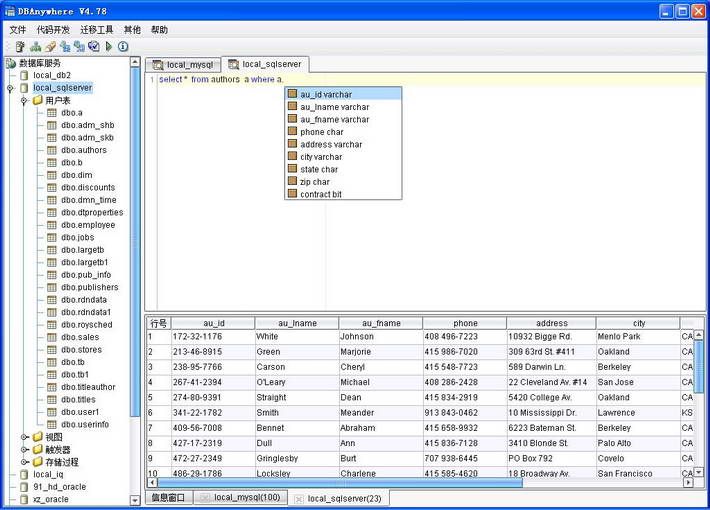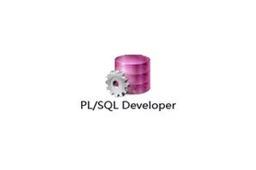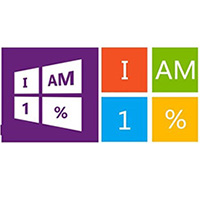First of all, it can be said that Delphi users are very extensive in China. The vast majority of c/s developers use Delphi development tools. With the development of the Internet and the development of enterprises, more and more enterprises need Remote processing of business on the Internet requires support from the Internet system.
There are many ways to implement Internet systems. The most common ones are b/s architecture, three-tier structure, or using products from Citrix, Communication Technology and other companies. It can be said that they are all good choices. Each technology has its advantages.
So why choose Dbanywhere-P2P development platform?
1. This is a development platform, not an application platform:
As a developer, we generally have to consider it from the user's perspective. If the customer purchases the software and needs to install other software and hardware equipment, I actually feel that this is not very good unless there is no other way. Using a development platform, developers can easily develop secure Internet software, wouldn't it directly save customers money on purchasing other software and hardware? In many applications, the cost of purchasing connected devices is often more than that of purchasing application software. I think it is better to just buy the software without installing additional devices (renovation does not count, because you don’t want to change to new software for the time being).
2. The platform’s data transmission speed is fast:
Transmission efficiency is an urgent requirement for many small and medium-sized enterprises. Why? Now 99% of enterprises still use adsl to access the Internet. The main reason is that the current adsl is not fast enough, but it is indeed very popular. So most enterprises very much hope to be able to run their business at high speed based on the existing adsl. Systematic. How many applications are doing better now?
The reasons for not strongly supporting it are as follows:
1. Unable to solve the problem of data volume: General intranet software does not pay much attention to the processing of data traffic. Any query or record may cause the transmission of a large amount of data. In remote Adsl, the amount will be too large. , the speed will be slower.
2. This is an add-on product. As the usage points increase, the investment will be much more than that of software.
Let’s talk about products with B/S structure. Just search on the Internet and find out how many B/S systems are really flexible. As far as ERP is concerned, looking at domestic and foreign systems, most of them are not C/S structures. Why do you say this? Because the current development flexibility of B/S is indeed very different from that of C/S. Of course, B/S also has many advantages that C/S cannot match. But as far as the current network environment of small and medium-sized enterprises is concerned, there are still many shortcomings:
1. The speed is not fast: Applications that directly deploy B/S in adsl are generally slower, especially the broadband services of different service providers (of course, some companies have encapsulated the server side themselves, which has indeed improved the speed a lot).
2. Disconnection cannot be handled by the terminal itself. Because Adsl is not particularly stable and may be disconnected, the program with a B/S structure will no longer work. The C/S structure can completely work offline. Therefore, many systems with a B/S structure also provide an offline version of the C/S structure. Wouldn't this be troublesome?
Let’s talk about the current three-tier structure products. Most of them use Webservice, Midas/Dcom, combination with jave, Com+ and many other methods. They do have many advantages, but for small and medium-sized enterprises, I always feel that these systems are The speed is not fast (if there is fiber optic on the server side, it is indeed very good). I know many friends who develop three layers (usually Midas/Dcom, SocketConnection, etc.) and often encounter concurrency and speed problems.
3. Good data security:
Today's enterprises also consider a lot of security issues. For most current applications, security issues are generally not big. Dbanywhere handles security in this way. The transmitted data has passed 128-bit encryption and transmission. High compression processing is carried out in the process; the server can authorize the logging in terminal, and users who are not within the authorization range cannot log in.
4. Automatic and efficient paging processing of massive data:
For large amounts of data, paging processing is generally required, otherwise the amount of data to be transmitted will be too much, and transmitting on adsl is a bit too tiring. DbAnyWhere has built-in general and efficient paging methods. Users no longer need to consider whether to use cursors or not in and other methods to solve the problem, nor do they need to piece together statements. DbAnyWhere has been done, and it can be directly set and called, which is simple and convenient.
5. High concurrency:
The system uses P2P data transmission, connection pool and other technologies to achieve a high level of concurrency. The server takes up very little resources and has good stability.
6. The deployment conditions are simple:
DbAnyWhere has relatively low environmental requirements. Even using Adsl as the server can achieve very good performance. If the amount of data transmission in an average enterprise is not particularly large, an ordinary Adsl line can easily handle less than 50 points. .
The system uses P2P technology and has the ability to penetrate firewalls and Nat, making the system very adaptable.
Finally, to summarize: DbAnyWhere is pretty good in terms of security, high speed, and high concurrency. For example, the data transmission speed of the system developed with DbAnyWhere on the external network is basically the same as that on the internal network. This is a released test system. You can test it and find out.

































